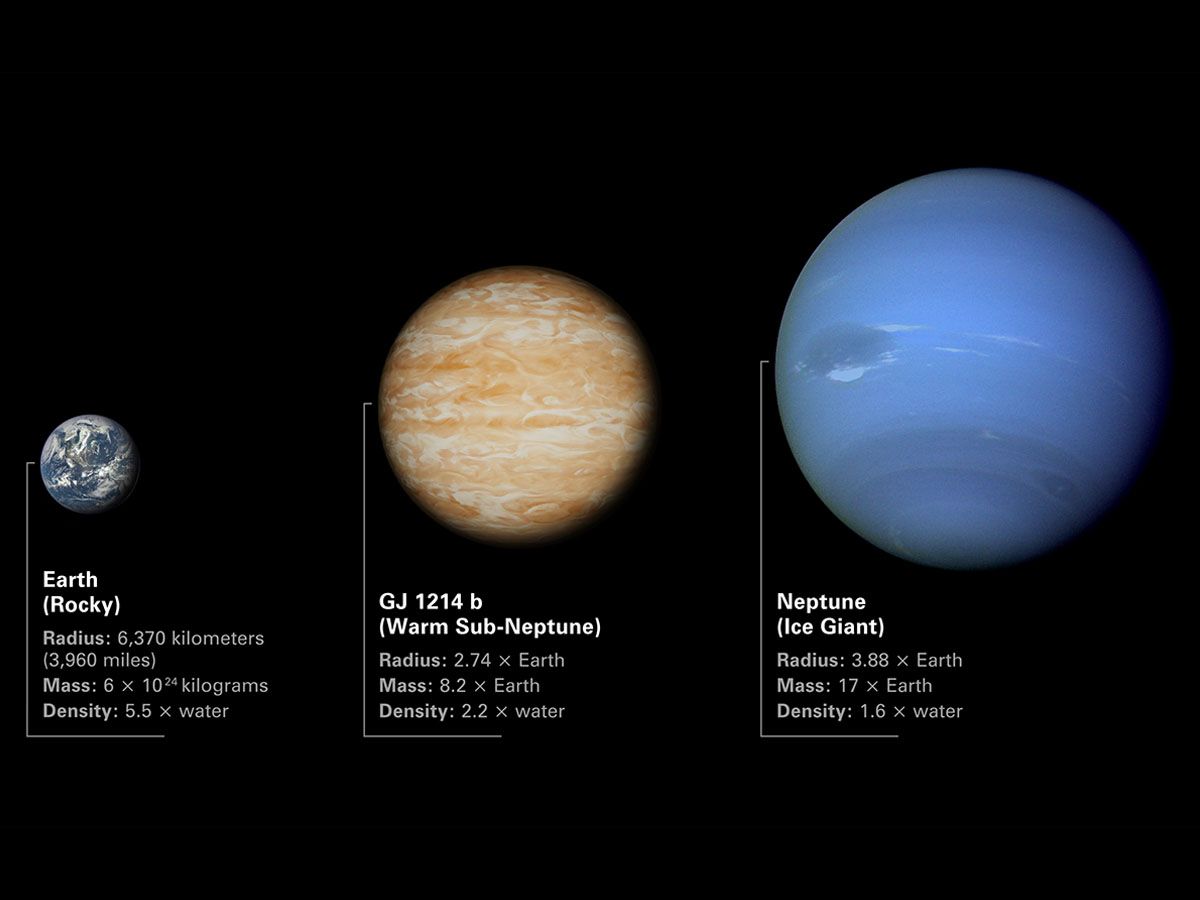For years, astronomers have been captivated by the enigmatic qualities and elusive allure of GJ 1214 b. This mesmerizing celestial body, unlike anything found within our own solar system, belongs to the intriguing class of "mini-Neptunes." These captivating planets, abundant throughout the galaxy, have long perplexed scientists, leaving their existence shrouded in a veil of uncertainty. However, a new era of exploration has dawned with the advent of the state-of-the-art James Webb Space Telescope (JWST). With this revolutionary instrument in their hands, researchers now stand poised to unravel the enigma of GJ 1214 b's atmosphere, unlocking its well-guarded secrets.
Unveiling GJ 1214 b's Elusive Atmosphere
GJ 1214 b's atmosphere presents a veil of mystery that has eluded previous observation attempts. Its impenetrable nature has made it exceedingly difficult to study and understand. Like a cosmic enigma, this planet has hidden its atmospheric characteristics behind a possible shield of thick haze or cloud layer, adding an additional layer of complexity to the puzzle.

In their quest to penetrate the veil that conceals GJ 1214 b's atmospheric secrets, researchers have employed innovative approaches and cutting-edge technologies. By leveraging the unique capabilities of the James Webb Space Telescope (JWST), they have embarked on an extraordinary mission to unravel the enigma that lies shrouded within this distant world.
The Innovative Approach to Observation
Central to this revolutionary endeavor is the remarkable Mid-Infrared Instrument (MIRI) installed on NASA's James Webb Space Telescope (JWST). This state-of-the-art instrument represents the cutting edge of technology, enabling scientists to delve deeper into the mysteries of the universe.
Guided by the keen eye of MIRI, the research team embarked on an extraordinary mission. By capturing and analyzing the subtle infrared signatures emitted by GJ 1214 b, they constructed a mesmerizing "heat map" of the planet as it gracefully orbited its host star.

This captivating heat map became the key to unlocking the secrets of GJ 1214 b's atmospheric composition. The intricate patterns of temperature variations revealed by MIRI provided valuable insights into the nature of the planet's atmosphere. It allowed scientists to peer into the depths of this distant world and decipher the chemical components that make up its enigmatic veil.
The innovative use of MIRI on the JWST has pushed the boundaries of observational capabilities, opening up new vistas in our quest to understand the cosmos. By harnessing the power of infrared detection and the precise tracking of GJ 1214 b's orbit, scientists have ventured into uncharted territory, unveiling details of this distant world that were once beyond our reach.
Revealing the Secrets of GJ 1214 b's Atmosphere
One of the most remarkable discoveries about GJ 1214 b's atmosphere is the stark temperature contrast that exists between its day and night sides. As the planet completes its orbit, the scorching sun blankets the dayside in intense heat, reaching a blazing temperature of 279 degrees Celsius. However, as the sun sets, GJ 1214 b plunges into the night, with temperatures dropping to 165 degrees Celsius. This dynamic interplay between temperatures paints a mesmerizing picture of a world in perpetual flux.

Delving deeper into the atmospheric secrets of GJ 1214 b, scientists have made fascinating revelations regarding the presence of heavier molecules. Unlike the lighter hydrogen molecules found in other celestial bodies, GJ 1214 b boasts a unique chemical fingerprint, characterized by the existence of compounds such as water or methane. The detection of these compounds offers intriguing insights into the planet's formation process and hints at the tantalizing possibility of a water-rich world.
Mini-Neptunes - A Common Yet Mysterious Phenomenon
The intriguing aspect of mini-Neptunes lies in their conspicuous absence from our own cosmic neighborhood. While our solar system is home to rocky planets like Earth and gas giants like Jupiter and Saturn, the enigmatic mini-Neptunes have eluded us. Their existence beyond our immediate realm has sparked curiosity among astronomers and deepened our yearning to understand their nature.
Further observations are indispensable to fully grasp the nature and formation of mini-Neptunes. Each discovery, each piece of data we gather, brings us closer to unraveling the cosmic enigma that these captivating celestial bodies represent. With every step forward, we expand our knowledge of the universe and gain a deeper appreciation for the diverse tapestry of worlds beyond our solar system.
Sources: nasa.gov / phys.org / scitechdaily.com / npr.org













